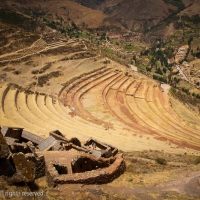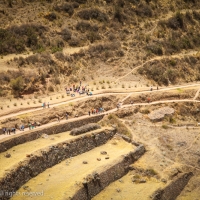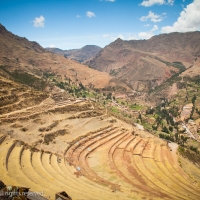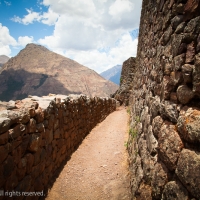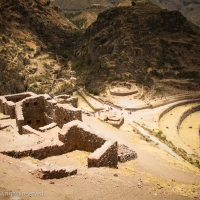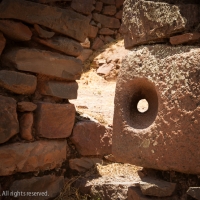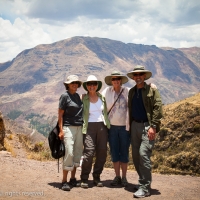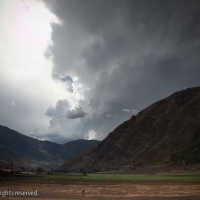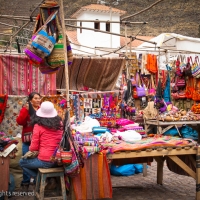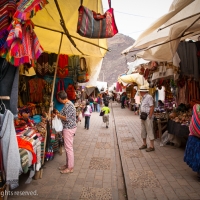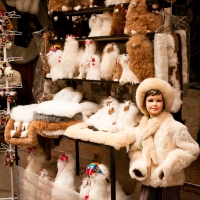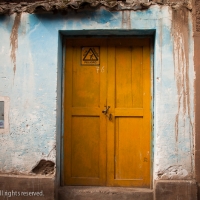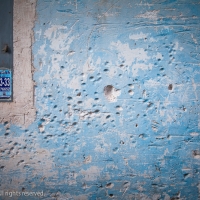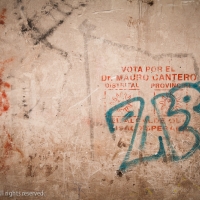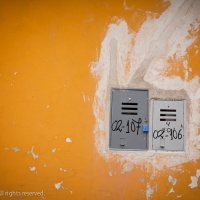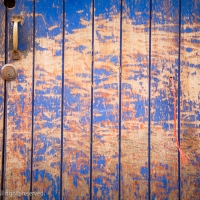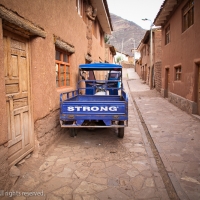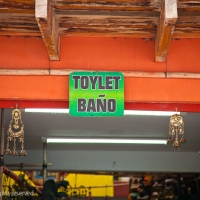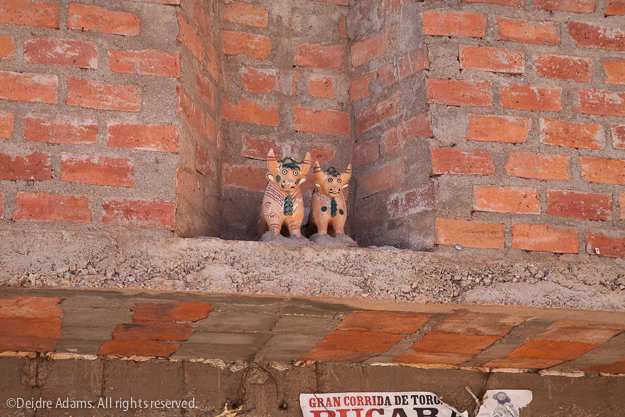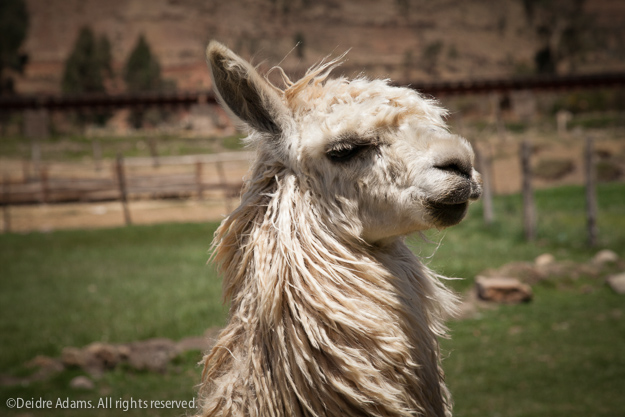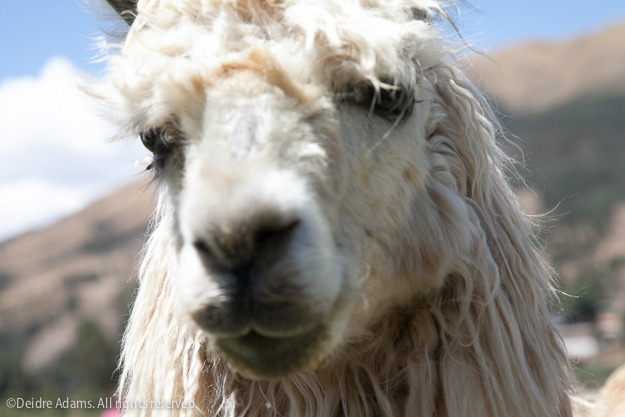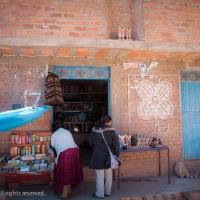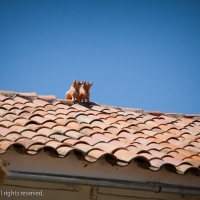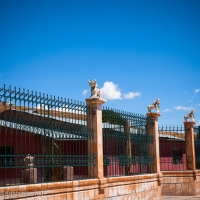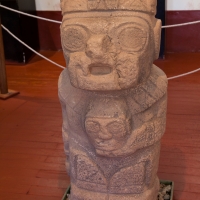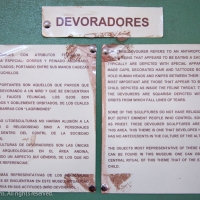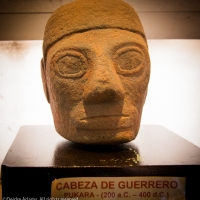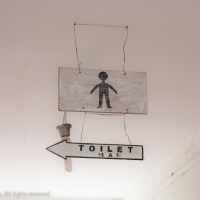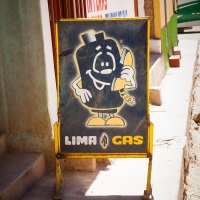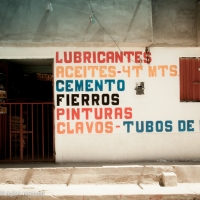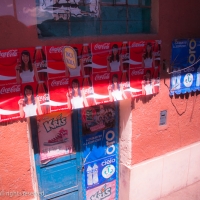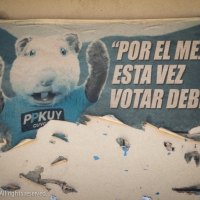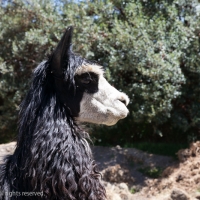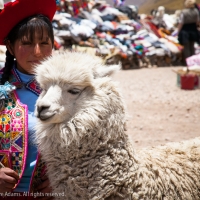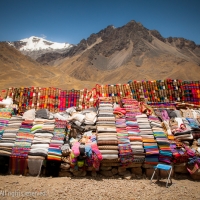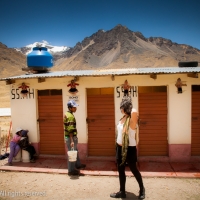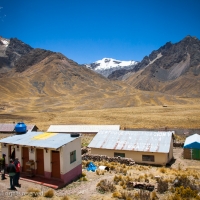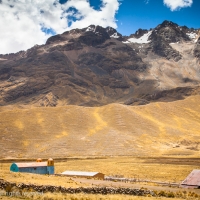Peru, Part 11 – Ollantaytambo
Ollantaytambo was my favorite town on the entire Peru trip. I could easily picture myself living to a ripe old age here, starting my mornings with a coffee and empanada at La Esquina before getting the day’s provisions at the market. Then I would spend the afternoon and evening working on my art, stopping only to make a delicious dinner of local foods and spices, or perhaps to take a walk in the glorious afternoon glow of the sun.
It’s a lovely little town on the Urubamba River, nestled in a basin surrounded by majestic mountains. It was originally founded in the mid-1500s by the Inca Pachacutec, one of the most important and powerful emperors of the Inca Empire, and then fortified and used as a stronghold against the Spanish by the Manco Inca, leader of the native resistance. Many of the original buildings are still inhabited today, although changed somewhat, with the original thatched roofs having been replaced with tejas shingles. A network of the original irrigation channels filled with rushing water flow throughout the town beside the cobblestone streets, and pedestrians are constantly stepping over them as they navigate the busy sidewalks.
We stayed at the Ollantaytambo Lodge Hotel – not fancy, but comfortable and charming. I suspect it only gets a 2-star rating because of the fact that you only have a 2-hour window each afternoon in which there is enough water to take a shower – despite the fact that there’s an enormous amount of water flowing throughout the streets 24 hours a day.
This little guy apparently lived at the lodge, and whenever we ventured outside the gate, he would accompany us for a couple of blocks or sometimes all the way to the center of town.
There are many very good restaurants here, as well as a large market for fresh fruit and vegetables and other food, plus the usual shops for souvenirs and the like. The town square was always bustling with activity. We were there in time to see a motorcycle cab race as well as groups of local schoolchildren practicing traditional dances in the main square.
We took one short excursion for the purpose of experiencing chicha beer, a traditional, slightly alcoholic drink made from germinated maize first boiled in a big pot over a wood fire, then fermented in a large earthenware pot.
After meeting the proprietress and hearing about the process, we were ready to try a sample. But wait – you cannot take a taste until you have made the proper acknowledgment by saying “Pachamama, santa tierra” (Earth mother, holy ground) as you pour a couple of drops of your chicha on the ground. For me, one small taste was enough. I’m sticking with microbrews after this.
Also at the Descanso establishment, we got a chance to play a round of juego de sapo, the frog game, in which you toss a large brass coin at the board and try to earn points by getting your piece to land in one of the holes or spinners, with the ultimate goal of getting it into the frog’s mouth. Susan is the reigning champion of our group.
Then we were off to see the Ollantaytambo ruins.

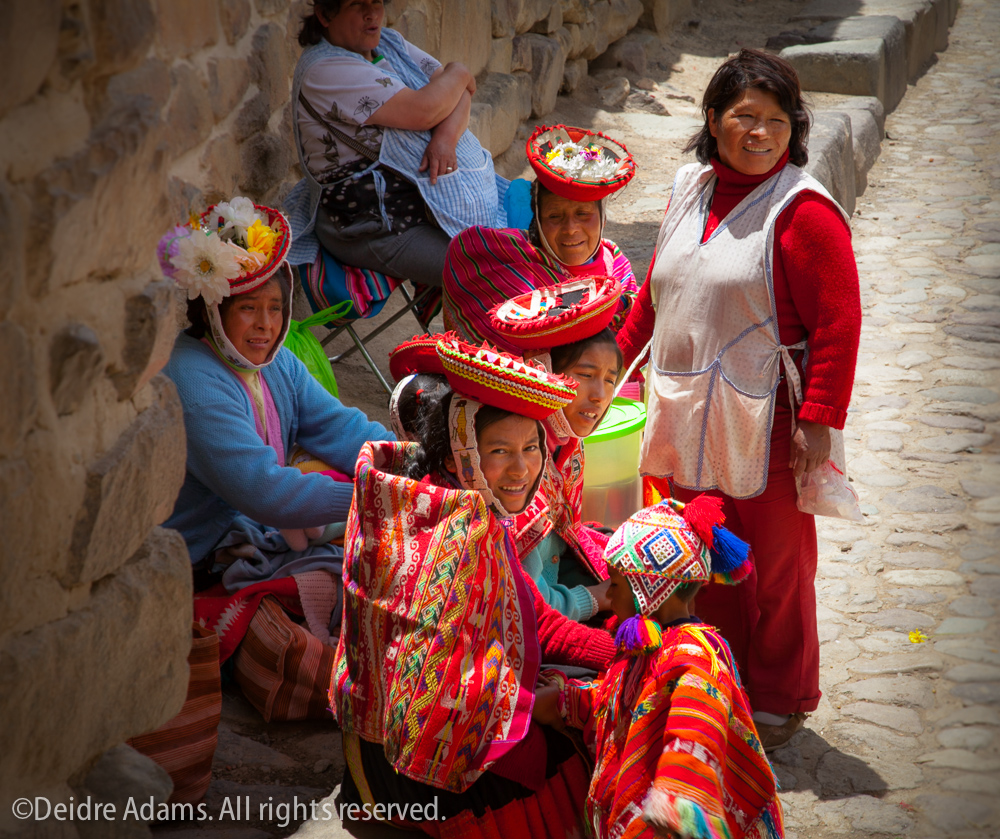
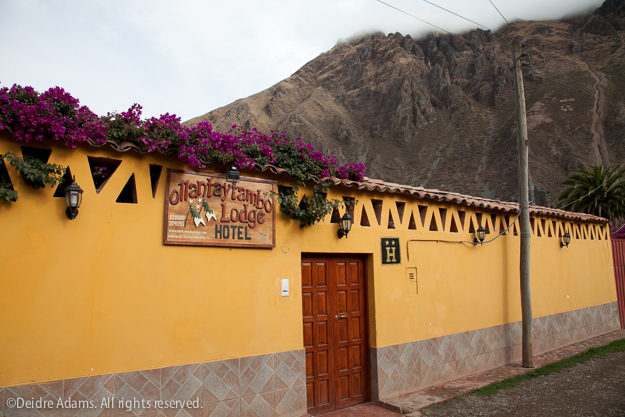
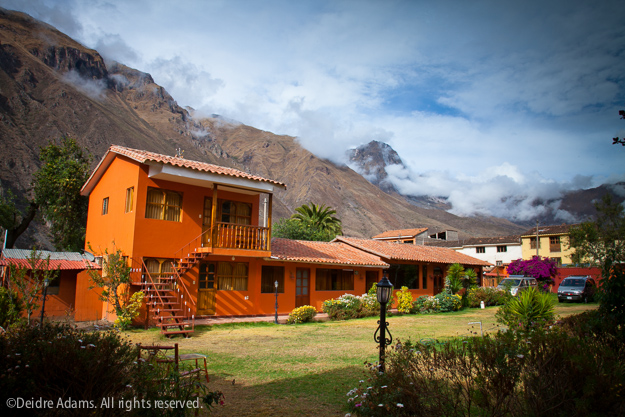
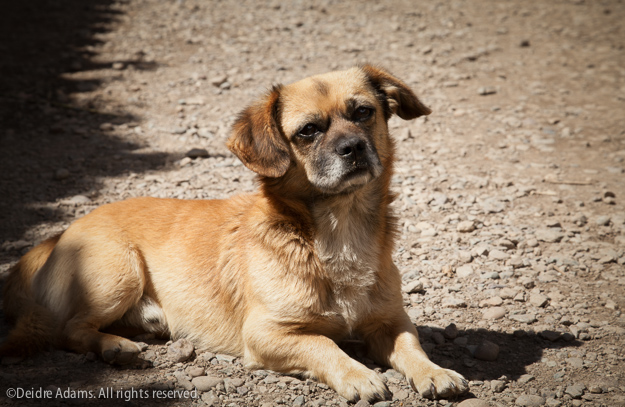
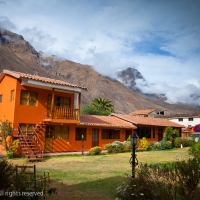
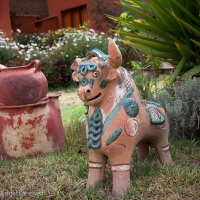
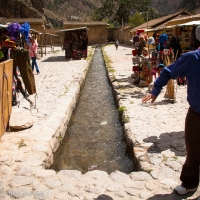
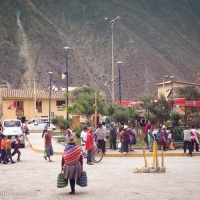

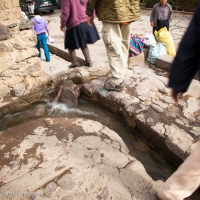

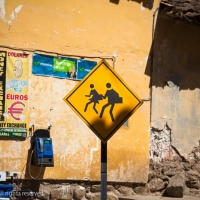
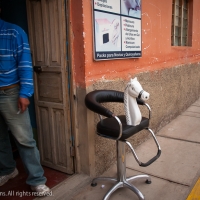
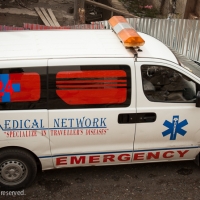

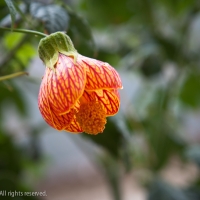
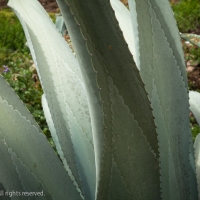
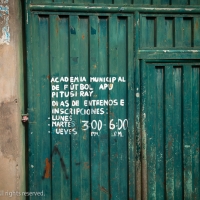

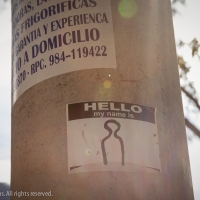
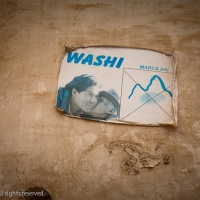

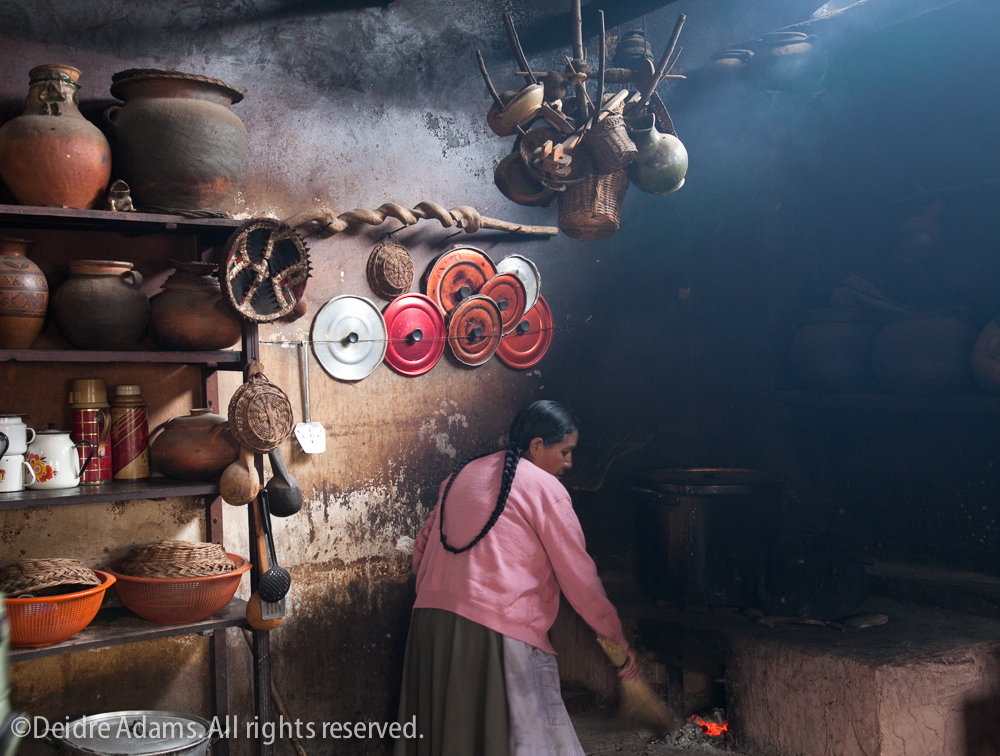
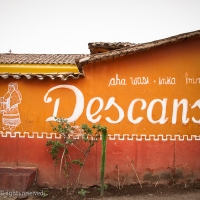
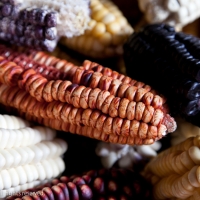
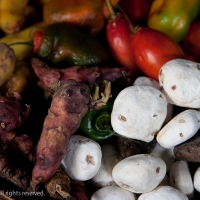
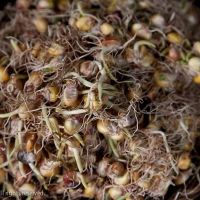

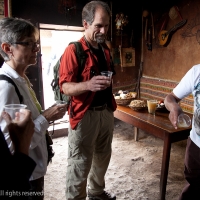
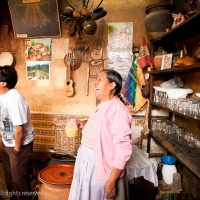
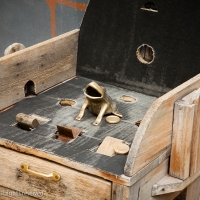
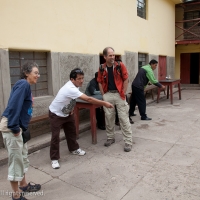
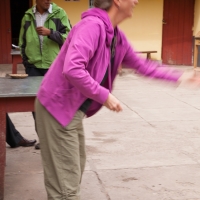
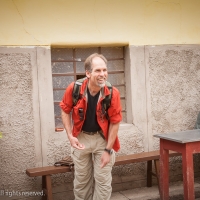
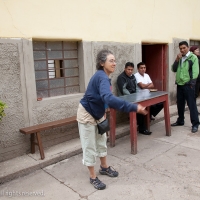
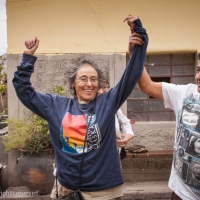
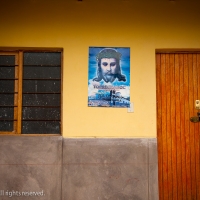
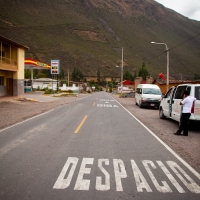
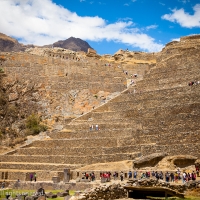
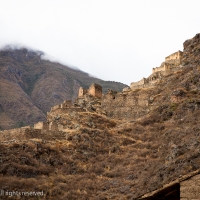
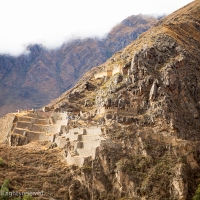
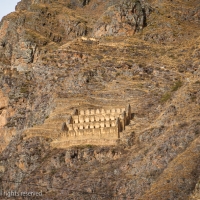
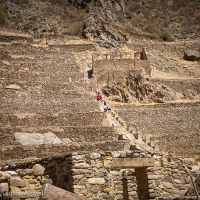

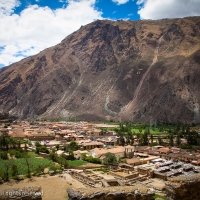
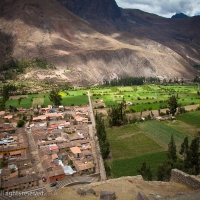


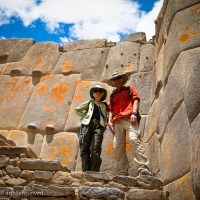
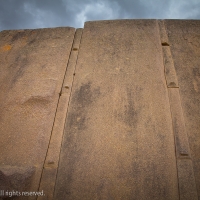
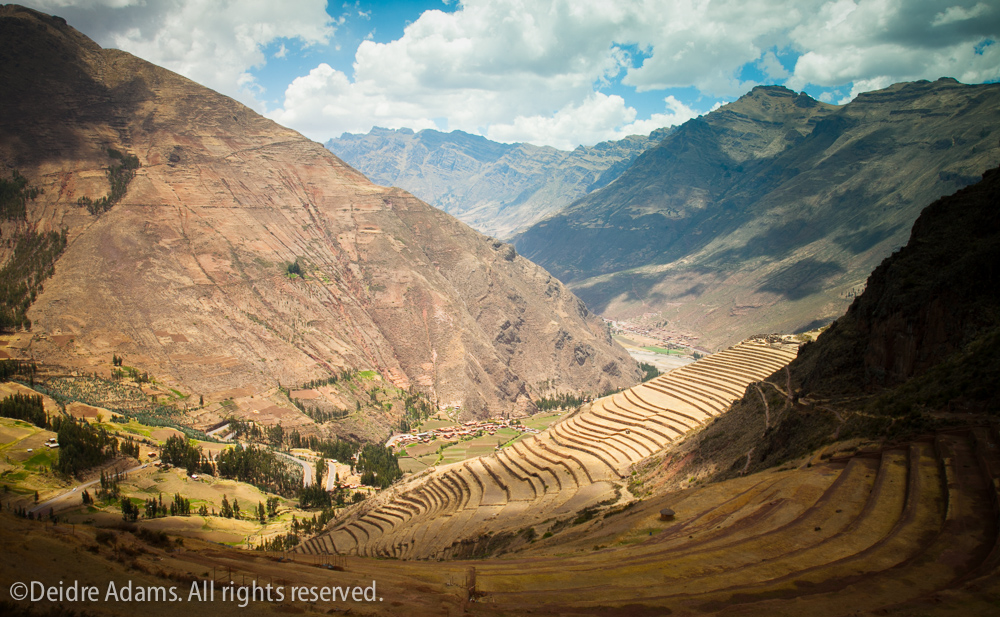 Inca Písac, Sacred Valley, Peru
Inca Písac, Sacred Valley, Peru
